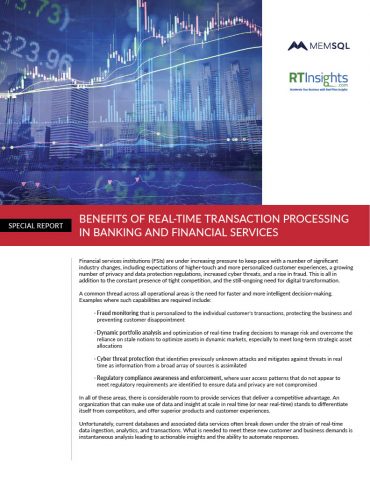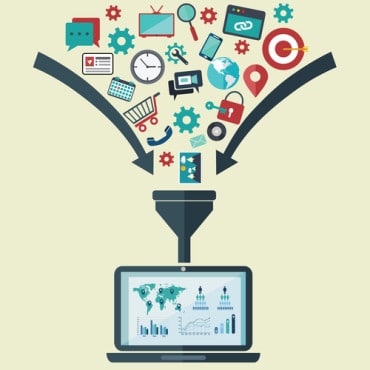
The food ingredients of the average meal in the U.S. travels over 1,500 miles to get to a plate. RTInsights Editorial Director Suzanne Kattau discusses how real-time sensor technology helps shippers track that meal’s ingredients through each mile.
There are now real-time traceability and monitoring systems for agricultural products based on wireless sensor networks. GlobeRanger Corp. and Tech Mahindra Ltd. are two companies offering real-time, sensor-based systems for the food industry to track ingredients over many food miles.
What is a food mile? A food mile is defined as the distance food travels from where it is grown or raised to where it is ultimately purchased by the consumer or end user, according to The Leopold Center for Sustainable Agriculture, a research and education center on the campus of Iowa State University. The food ingredients of the average meal in the U.S. travels over 1,500 miles to get to a plate according to “Food, Fuel, and Freeways: An Iowa perspective on how far food travels, fuel usage, and greenhouse gas emissions,” a report on a study conducted by Rich Pirog, Associate Director of the Leopold Center at the time.
What’s more, the food industry can now optimize across the agricultural value chain the information to drive great decisions on-the-ground and in real-time, according to John Corbett, Ph.D., an agricultural climatologist and the cofounder and CEO of aWhere, Inc., a real-time Agricultural Intelligence (AI) software provider based in Broomfield, Colorado.
“We now have the capacity to create a real-time, localized, agricultural production tracking and monitoring system—a food/nutrient security information system,” wrote Corbett in a World Bank blog post on May 26, 2015. “What Big Data does to optimize our morning commutes in cities can also be done to monitor agriculture.”
GlobeRanger: Tracking Food in Real-Time
GlobeRanger Corp., a Fujitsu company and provider of sensor-based solutions, says they have created “an information processing infrastructure at the edge of the enterprise” which enables companies to harness data that is generated “outside traditional IT environments to improve their business processes and move closer to being real-time organizations.”
Founded in 1999, Texas-based GlobeRanger is helping to solve food-tracking problems within the food industry, in part, by monitoring real-time data about products, their environment and their movement. According to the company:
“Within the food industry, GlobeRanger solutions provide real-time track and trace capabilities to enable food companies to monitor the complete harvest-to-market process. RFID-tagged harvest bins, pallets, shipping containers and any other types of containers are automatically tracked with fixed or handheld RFID readers and the data is collected by the iMotion system in real-time. This identification and tracking data can be enhanced with sensor input regarding temperature, sanitation, humidity, speed tilt, tampering and other criteria to provide comprehensive documentation of conditions.”
One key feature and/or benefit about GlobeRanger’s asset tracking solution is, according to the company, that it improves product environment integrity with real-time data. Users can monitor a product’s environment in real-time based on “user-defined rules concerning temperature, humidity, shock/shake and/or dwell time.” Users can also be automatically sent alerts “using customer preferred formats from email notifications to beeps and visual display.”
Tech Mahindra: From Farm to Fork in Real-Time
Digital transformation, consulting and business re-engineering solutions provider Tech Mahindra offers “Farm-to-Fork,” an end-to-end supply chain visibility solution for fresh produce, meat and frozen foods, milk and dairy products, package foods, and beverages and confectioneries. Farm-to-Fork helps companies in the food industry transport produce and meat grown at farms hundreds of miles away and deliver it as fresh as if it were locally grown.
Tech Mahindra’s Farm-to-Fork service combines machine data with enterprise data “to orchestrate the supply chain” by improving visibility and enabling real-time decision making, which ensures that perishable items” freshness is maintained during the journey from farm to grocery store. According to the company,
“the Farm-to-Fork service integrates the power of telematics, sensors and various telecommunications technologies to provide a comprehensive solution where mission-critical data is captured and sent to business analytics servers. The solution enables real-time alerts/notifications on threshold violations. It also monitors the real-time position of the vehicle. All of this ensures that quality of produce is monitored across its journey from the farm to the fork, and corrective actions are taken on a predictive basis to avoid quality deterioration. If and when quality deterioration occurs, the solution provides traceability and audit data that prevents the re-occurrence of such events.”
Watch the video below for more information about Tech Mahindra’s Farm-to-Fork service:
Putting It All into Perspective
Up to one third of all food is spoiled or squandered before it is consumed by people according to the UN Food and Agriculture Organization (FAO). “Food loss and food waste refer to the decrease of food in subsequent stages of the food supply chain intended for human consumption,” the FAO states on their website. “Food is lost or wasted throughout the supply chain, from initial production down to final household consumption. The decrease may be accidental or intentional, but ultimately leads to less food available for all.”
The Institute of Mechanical Engineers puts that figure higher, estimating that half of all food is wasted worldwide in their 2013 report, “Waste Not, Want Not.” With current practices “wasting up to 50 percent of all food produced,” the report states, “engineers need to act now and promote sustainable ways to reduce waste from the farm to the supermarket and to the consumer.”
Now, real-time traceability and monitoring systems for agricultural products that are based on wireless sensor networks—like the ones offered by GlobeRanger, Tech Mahindra Ltd.—are in the position to help reduce the amount of food spoiled worldwide by helping the food industry track food in real-time, from the farm right to your breakfast, lunch or dinner plate.
Want more on this topic?
Research from Gartner: Real-Time Analytics with the Internet of Things
From the Center to the Edge: The IoT Decentralizes Computing
For Manufacturers, IoT Means the ‘Internet of Tools’
Becoming an ‘Always On’ Smart Business
Liked this article? Share it with your colleagues using the links below!




























